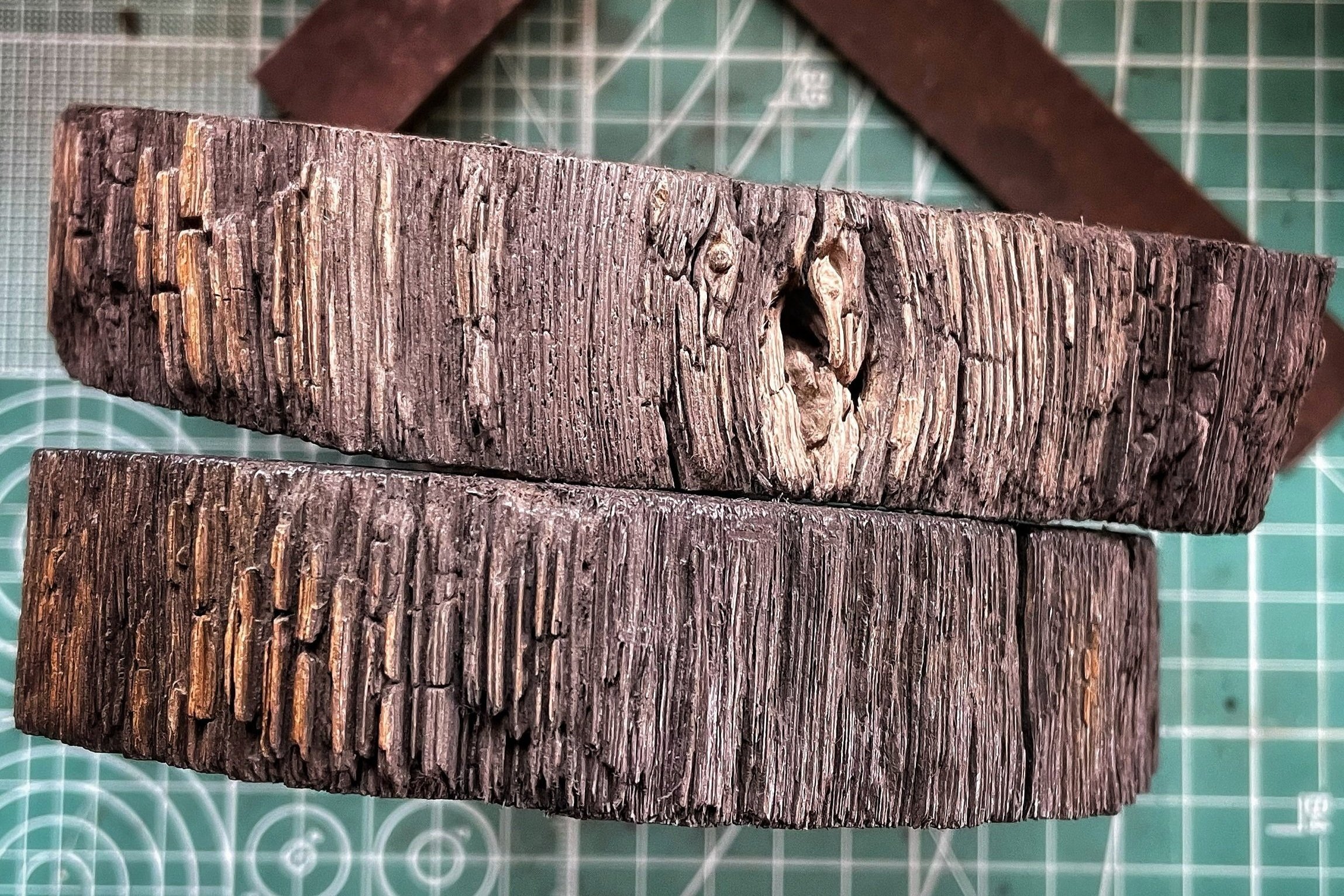Bog oak
Much of the work I’m doing at the moment is focused on bog oak, Fenland (East Anglia UK) bog oak to be precise.
I’ve got a number of small pieces coming together, with a very specific audience in mind. And for this audience, I’m focused entirely on preserving the grain, preserving the outer edges, and enhancing the beauty of every detail including knots, cracks and crevices.
Bog oak, for all its beauty, is a terribly dirty wood to work with. The sawdust is unlike anything I’ve ever experienced, it gets everywhere and just when you think you’ve got it all, you realise that you haven’t! Before the applying the final finish, I find that using masking tape for the final dust-collection step is best; I’m always amazed at what is left behind after meticulous detail work.
3000+ year old fenland bog oak - I love the detail and will preserve 100% of it
Here’s a great article from my friends at Adamson and Low; in here they talk about the origins of our wonderful, but very limited resource:
“…Many thousands of years ago the East Anglia fenland basin was very densely forested by gigantic Oak trees.
Approximately 7000 years ago a rise in sea level relative to land level caused the rivers to back up and flood the fens, consequently the trees died standing and then fell into the silt of the forest floor and many have been preserved under anaerobic conditions until now.
Due to cultivation of this productive land these sub-fossilized trees are coming to the surface causing much inconvenience to the farmers.
The preserved trees can on occasion have a branchless length in excess of one hundred feet, the canopy having long since decayed. These colossal examples hint at the extraordinary grandeur and density of these high forests. The trees are however extremely fragile when exposed to the elements and degrade very quickly indeed…”


